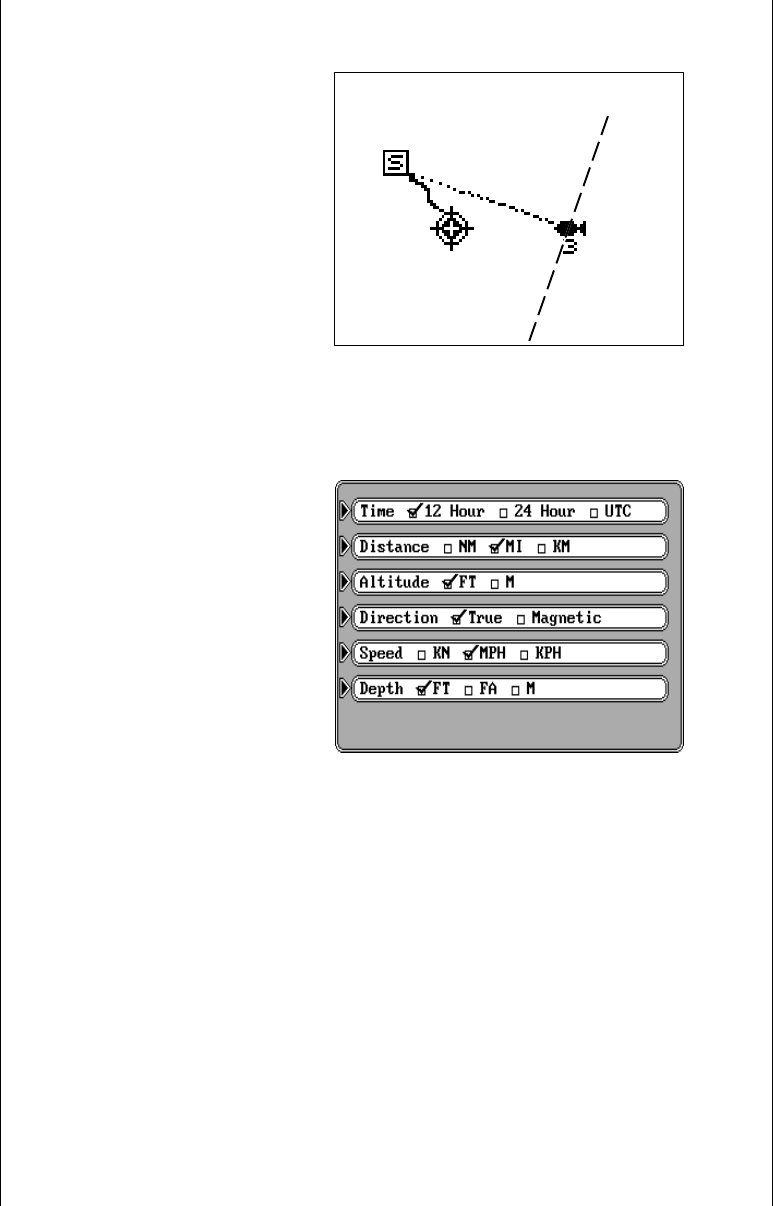
59
PERPENDICULAR ALARM
The perpendicular alarm
sounds when your course is
even with a waypoint and is
starting to pass it. The perpen-
dicular alarm has no adjust-
ment. It doesn’t care how far
from a recalled waypoint you
are; it sounds only when you’re
passing the recalled waypoint.
For example, on the map above,
the waypoint is perpendicular
to the present position’s course. In this example, as soon as the present
position crosses the imaginary dashed line, the perpendicular alarm will
be “tripped” and sound an alarm.
UNITS OF MEASURE
The units of measure are ad-
justable. This includes time, dis-
tance, altitude, direction, speed,
depth, and temperature. To
change any of the settings, first
press the MENU key two times.
Now press the key next to the
“Units of Measure” label. The
screen shown at right appears.
Simply press the key next to
the label that you wish to change
until the check mark in that la-
bel moves to the desired set-
ting. Press the CLR key to exit this screen and return to a mapping or
navigation screen.
Time can be shown on the screen as 12 hour (A.M. - P.M..), 24 hour (2:00
P.M..= 1400 hours), or UTC time. Normally, the unit shows your local time
in 12 hour format, but you can also display UTC time (which is the time at
Greenwich, England). Distance can be shown in nautical miles (NM),
statute miles (MI), or kilometers (KM). Altitude can show in either feet or
meters.
Direction (True and Magnetic Position)
True north is the top of the world. It’s where all lines of longitude converge.
Magnetic north is the location our compasses point. It lies several hundred
miles to the south of true north, at a location in Canada.


















